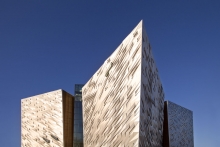Pervious Pavement: Pavement That Leaks Like a Sieve, Part 2
Contractor to Contractor: In this second of a two-part series, contractor-turned-homebuilder Fernando Pages Ruiz shares his knowledge on how to choose a mix, prep the site, and install porous pavement.
Although a blended, high-course aggregate/low-fines concrete (a concrete blend of Portland cement, 3/8" or pea gravel aggregate, and little to no sand) is a simple concept, the logistics of it are far from simple. For this highly porous concrete to provide a durable surface, conditions have to be almost perfect. The concrete requires an exact proportion of aggregates and water, special chemical admixtures, proper mixing during delivery, and expert placement. I recommend that if you decide to use pervious pavement in one of your projects, don�t do it yourself. Hire the very best paving contractor in your area and work with the largest and most sophisticated ready-mix supplier. Pervious pavement is not so much a concrete product as it is a paving system, including soil, sub-grade, and, of course, the mix.











